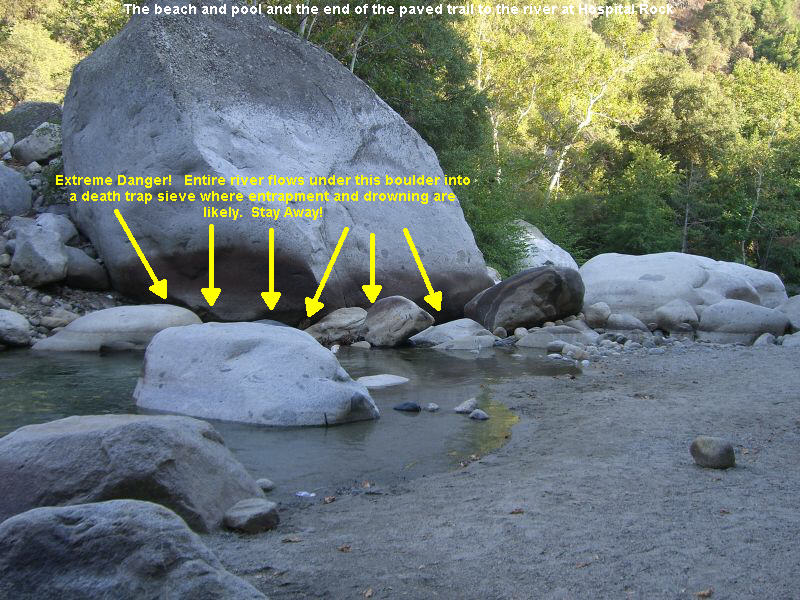Strainers are a very common site on small streams that recently had a great deal of rain. When creeking, we always keep an eye out for them and typically get to shore ASAP when we see one unless there is an easy line around the obstruction. Sieves are far less common and are usually well documented in the river database on the AW site. My advice is don't mess with sieves. Stay away from them or portage if you have to.
Strainers
 Strainers are usually downed trees or a collection of branches and trash. Do whatever you can to avoid these death traps. If you accidentally swim into a strainer, work very hard to climb up on the structure rather than getting impaled or strained by hidden limbs. Here is an example of one on the Savage River in Maryland. In the SWR class, we always perform a strainer swimming drill: Strainer Swimming Drill. This is one place where the defensive swimming technique will fail and you will be swept under. If you can't avoid a strained, swim head first and quickly towards the strainer. When you reach the strainer, push yourself over the branch and kick your feet to help push you over.
Strainers are usually downed trees or a collection of branches and trash. Do whatever you can to avoid these death traps. If you accidentally swim into a strainer, work very hard to climb up on the structure rather than getting impaled or strained by hidden limbs. Here is an example of one on the Savage River in Maryland. In the SWR class, we always perform a strainer swimming drill: Strainer Swimming Drill. This is one place where the defensive swimming technique will fail and you will be swept under. If you can't avoid a strained, swim head first and quickly towards the strainer. When you reach the strainer, push yourself over the branch and kick your feet to help push you over.
Sieves
 A great way to think of a sieve to to think about how a toilet bowl works when you flush it. They are formed by cracks in rocks that often get backfilled with another small rock that gets lodged in tight. Water pours through this hole and anything else that is unfortunately to be close by. Never take chances with a sieve - stay away! AW does a great job at providing warnings for known sieves in rapids. Here is a great explanation on what a sieve is from Initiation Rapid on the Upper Gauley: Sieve.
A great way to think of a sieve to to think about how a toilet bowl works when you flush it. They are formed by cracks in rocks that often get backfilled with another small rock that gets lodged in tight. Water pours through this hole and anything else that is unfortunately to be close by. Never take chances with a sieve - stay away! AW does a great job at providing warnings for known sieves in rapids. Here is a great explanation on what a sieve is from Initiation Rapid on the Upper Gauley: Sieve.
